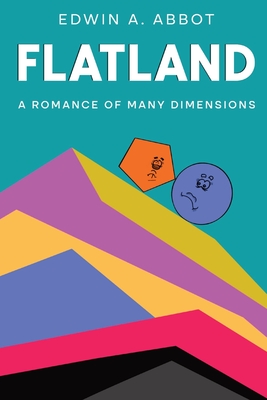Section 6: Of Recognition by Sight
bySection 6 delves into the unique way Flatlanders interpret visual information in a world limited by two dimensions. Sight recognition plays an essential role in the lives of the upper classes, particularly in areas where the natural presence of fog assists in the process. In these foggy regions, objects at various distances take on different degrees of dimness. This visual fading creates a gradient effect, allowing trained eyes to discern one shape from another. For instance, the angle of a triangle might appear darker than the nearly straight side of a hexagon. This subtle difference, while invisible to the untrained eye, is critical for social navigation. In Flatland, appearances can be deceiving unless interpreted through layers of refined understanding. The method does not rely on vivid color or curvature but on patterns of shadow and light that require years of discipline to detect.
Among professionals, recognition by sight becomes a kind of second language, spoken in gradients and line-lengths. When two figures approach—say, a Merchant and a Physician—their extremities fade at noticeably different rates. This contrast, shaped by how their geometries taper into the distance, becomes a social cue. The Merchant’s lines quickly dim, while the Physician’s remain more visible due to his broader base and multi-angled form. In this way, status and profession are literally seen in the shadows. Those raised among the elite learn to read these signs from a young age, developing the ability to judge character, rank, and intent by a glance. However, this is not merely visual instinct—it is the product of formal education and daily observation. For outsiders or those from poorer districts, such insight remains out of reach, reinforcing social separation through sensory skill.
Still, recognition by sight has its limitations. If a Triangle presents his flat side rather than his pointed angle, identifying him can become unexpectedly difficult. A brief misalignment, especially in motion, can blur distinctions that would otherwise seem obvious. The difficulty increases with more complex shapes like Hexagons or Heptagons, whose sides may not fade evenly into fog. When multiple figures interact or cross paths, the situation becomes even more challenging. At that point, even the sharpest observer may struggle to keep track. Accuracy demands patience, keen focus, and contextual awareness. These variables turn a simple encounter into a visual puzzle, solvable only by those with years of refined training. What others consider instinct is actually the result of constant practice and a highly disciplined mind.
Such skills are formally cultivated at prestigious institutions like the University of Wentbridge. Here, the brightest young minds of Flatland are taught to perceive with scientific precision. Lessons go beyond theoretical geometry, requiring students to perform hundreds of live recognition drills under various fog intensities and conditions. This education is expensive and exclusive, reserved for those born into privilege. Meanwhile, the working classes must rely on older, cruder forms of identification like touch or proximity. The elite use this disparity to maintain control, holding sight recognition as a mark of intellectual superiority. Without access to this knowledge, most citizens remain locked in their assigned roles. Mastery of sight becomes more than a skill—it becomes a symbol of dominance.
Interestingly, even among the educated, perfect recognition is not always achievable. Complex situations like processions, debates, or emergencies often introduce unexpected visual overlaps. Even seasoned mathematicians and priests must pause to adjust their assessments. These moments of uncertainty reveal that Flatland’s social order is not as flawless as it appears. The system depends not just on rules but on perception—and perception is prone to error. This vulnerability is rarely discussed openly but exists nonetheless, tucked behind layers of practiced precision. In essence, Flatland’s reliance on visual hierarchy highlights a deeper truth: that even the most controlled systems can be shaken by the simplest misalignment. Order, in the end, is always one shadow away from uncertainty.


